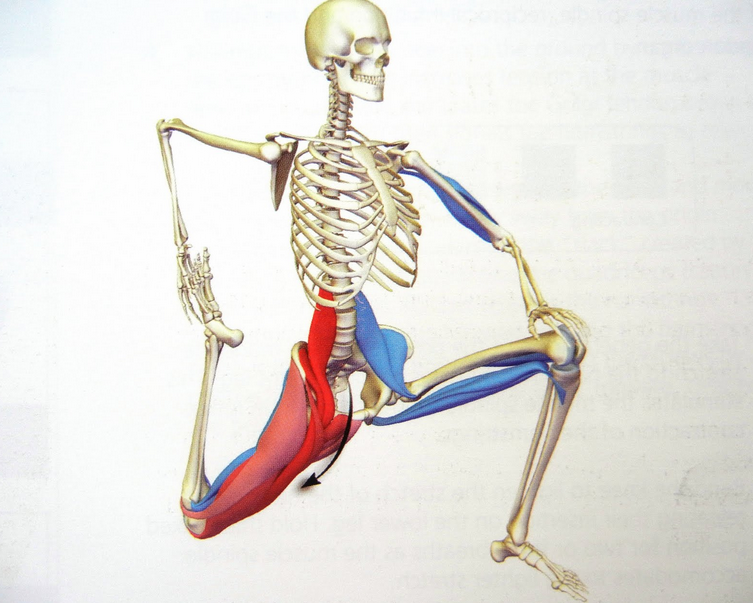All About the Psoas Major
The psoas major is a deep and mysterious muscle that tends to be overused and, when cranky, causes a lot of problems. All yoga instructors benefit from having a basic understanding of how this muscle works and how yoga can help it stay healthy and supple.

Basic Functions of the Psoas Major
While the psoas is a powerful hip flexor, it is also an important lumbar spine stabilizer. When it’s overly tight, it can pull the lumbar spine into excessive lordosis, cause pain through trigger point referral patterns, increase disc and nerve root compression, and/or increase unilateral torque on the pelvis and SI joints. It is very much connected with our sympathetic nervous system. It also doesn’t like sitting for prolonged periods and tends to be chronically tight in the presence of decreased overall core stability and lack of support from other muscles in the region, in particular the gluteus maximus and transversus abdominis. By the way, even though this article refers to one psoas at a time, you have two – one on either side of your body.
Passive Release for the Psoas Major
“Constructive Rest” position. Flat on back with legs elevated on a couch or chair, hips flexed and externally rotated, with knees slightly falling out to the sides. This position places psoas in a shortened, yet RELAXED position. It must be fully supported and relaxed. Stay here and relax for 5-10+ min
Active release for Psoas Major
Activate/strengthen the gluteus maximus muscle to trigger relaxation of the psoas through a neuromuscular property called reciprocal inhibition. Postures include low bridge, single leg bridge, locust, and many standing postures. Gluteus maximus is the primary mover of hip extension. A strong and alert gluteus maximus will help anchor the femoral head into the acetabulum, preventing the common anterior femoral head shearing which can lead to an uncomfortable “pinching” when the hip is flexed, such as in apanasana.
Also activate/strengthen the abdominal muscles, especially the transversus abdominis so they can share the work of trunk stability and trunk/hip flexion.
Strengthen & Warm the Psoas Major
Slow, dynamic, repetitive movements that invite a contract/relax rhythm to the psoas can increase blood flow and thereby warm and soften the muscle. Some examples: bridge pose to apanasana flow; low lunge to hamstring stretch flow; cat cow with hip flexion/extension; up dog to down dog, etc.
For a very tight/cranky psoas, I’d avoid or be very gentle with postures that isolate contraction of the psoas, such as navasana with a straight spine, and supine leg lifts. If you do these postures, I’d follow them right away with activation of the gluteus maximus, and then gentle psoas stretching.
Stretch & Lengthen the Psoas Major
A very tight psoas may not be receptive to stretching right away. If it won’t budge, then continuing to stretch it may increase lumbar compression and low back pain. However, once the psoas has had a chance to soften up through passive and active release, and has been warmed through dynamic movement, it is likely to be more receptive to a traditional static stretch. Classic ways to stretch the psoas muscle include low or high lunge, warrior I, Warrior II, pigeon, supta virasana, and many others.
Energetics of the Psoas Major
Since the psoas muscle is tightly bound to our fear response and stress experience, it can be very helpful to work with activities such as self reflection, journaling, and processing feelings about safety, family, belonging, adequacy, connection, and other qualities associated with 1st and 2nd chakras.
